imageryBaseMapsEarthCover
Type of resources
Available actions
Topics
Provided by
Years
Formats
Representation types
Update frequencies
status
Scale
-
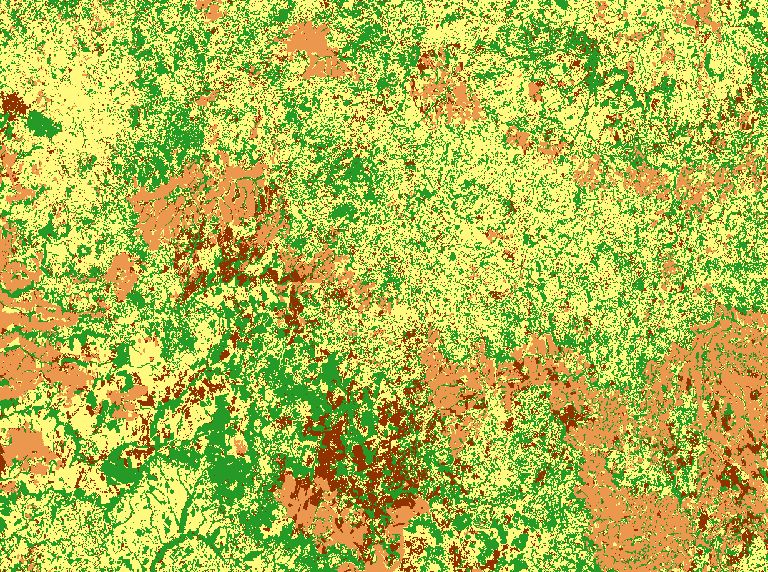
This land cover classification refers to a study area in Mato Grosso state, in the Cerrado biome. For this map, the CBERS-4/WFI monthly data cube was used, with a spatial resolution of 64 meters, using the best pixel composition function named as Least Cloud Cover First (LCF), which was previously named Stack in BDC older versions. This experiment uses the time series of an agricultural calendar year, from September 2018 to August 2019, extracted from the CBERS-4/WFI data cube. The input datacube was CBERS-4 (WFI) Cube Identity - v001, which was deprecated. The classification was made using 852 samples (Annual Crop: 257; Natural Vegetation: 245; Pasture: 216; Semi-Perennial Crop: 134) and the following data cube bands: bands red, green, blue, and near-infrared along with the EVI, NDVI, GEMI, GNDVI, NDWI2, PVR indices applying the random forest algorithm. The classification quality assessment using 5-fold cross-validation (Wiens et al., 2008) of the training samples showed an overall accuracy of 97.0% and a Kappa index of 0.96. For more information see the paper <a href="https://www.isprs-ann-photogramm-remote-sens-spatial-inf-sci.net/V-3-2020/533/2020/" target="_blank">CBERS DATA CUBE: A POWERFUL TECHNOLOGY FOR MAPPING AND MONITORING BRAZILIAN BIOMES.</a> . This product was funded by the Brazilian Development Bank (BNDES).
-

This is a land cover classification map of Brazilian Caatinga, from January to December of 2017. This classification was made on top of Landsat-8 16 days data cubes with spatial resolution of 30 meters, using the best pixel composition function named as Least Cloud Cover First (LCF), which was previously named Stack in BDC older versions. The input datacube was Landsat-8 - OLI - Cube Stack 16 days - v001, which was deprecated. The classification model was trained using 9324 sample points of the classes Agriculture 172, Country formation 577, Forest (Formação florestal) 222, Savanna 4819, Pasture 3538. The spectral band used were B1, B2, B3, B4, B5, B6, B7, along with the vegetation indices EVI and NDVI; the clouded observation were identified using the Fmask algorithm and estimated using linear interpolation. The classification algorithm was Random Forest. The post-processing consisted on cropping the images to the biome's boundary. This product was funded by the Brazilian Development Bank (BNDES).
-

This is a land cover classification map of Brazilian Cerrado, from August 29th 2017 to August 29th 2018. This classification was made on top of Landsat-8 days data cubes with spatial resolution of 30 meters, using the best pixel composition function named as Least Cloud Cover First (LCF), which was previously named Stack in BDC older versions. The input datacube was Landsat-8 - OLI - Cube Stack 16 days - v001, which was deprecated. The classification model was trained using 48850 sample points spread across the Cerrado biome (Annual Crop 6887, Cerradao 4211, Cerrado 16251, Natural Non Vegetation 38, Open_Cerrado 5658, Pasture 12894, Perennial Crop 68, Silviculture 805, Sugarcane 1775, Water 263). The spectral band used were B1, B2, B3, B4, B5, B6, and B7 along with the vegetation indices EVI and NDVI; the clouded observation were identified using the Fmask4 algorithm and estimated using linear interpolation. The classification algorithm was TempCNN (Deep Learning). This product was funded by the Brazilian Development Bank (BNDES).
-
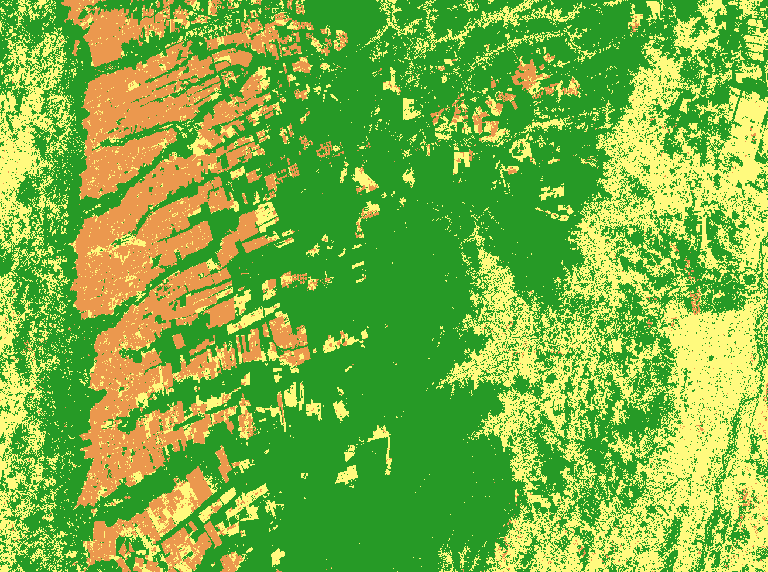
This land cover classification refers to a study area in Bahia state, in the Cerrado biome. For this map, the Landsat-8 monthly data cube was used, with a spatial resolution of 30 meters, using the best pixel composition function named as Least Cloud Cover First (LCF), which was previously named Stack in BDC older versions. This experiment uses the time series of an agricultural calendar year, from September 2018 to August 2019, extracted from the Sentinel-2 data cube. The input datacube was Landsat-8 - OLI - Cube Stack 16 days - v001, which was deprecated. The classification was made using 922 samples (Pasture: 258; Agriculture: 242; Natural Vegetation: 422). The spectral band used were B1, B2, B3, B4, B5, B6, and B7 along with the vegetation indices EVI and NDVI; the clouded observation were identified using the Fmask4 algorithm and estimated using linear interpolation. We trained a multi-layer perceptron for a deep learning classification network to classify the data cube using sits R package. Validation was done using good practice guidelines by Olofsson. The validation was done independently for each map using the PRODES Cerrado data of 2019. This data obtained overall accuracy (OA) 0.90. For more information see the paper <a href="https://www.mdpi.com/2072-4292/12/24/4033" target="_blank">Earth Observation Data Cubes for Brazil: Requirements, Methodology and Products.</a> This product was funded by the Brazilian Development Bank (BNDES).
-

CBERS-4/PAN5M - Level-2 Digital Number. Level 2 products have radiometric correction and geometric correction using satellite ephemeris and attitude data (system correction).
-

Earth Observation Data Cube generated from CBERS-4/MUX Level-4 SR product over Brazil extension. This dataset is provided in Cloud Optimized GeoTIFF (COG) file format. The dataset is processed with 20 meters of spatial resolution, reprojected and cropped to BDC_MD grid Version 2 (BDC_MD V2), considering a temporal compositing function of 2 months using the Least Cloud Cover First (LCF) best pixel approach.
-
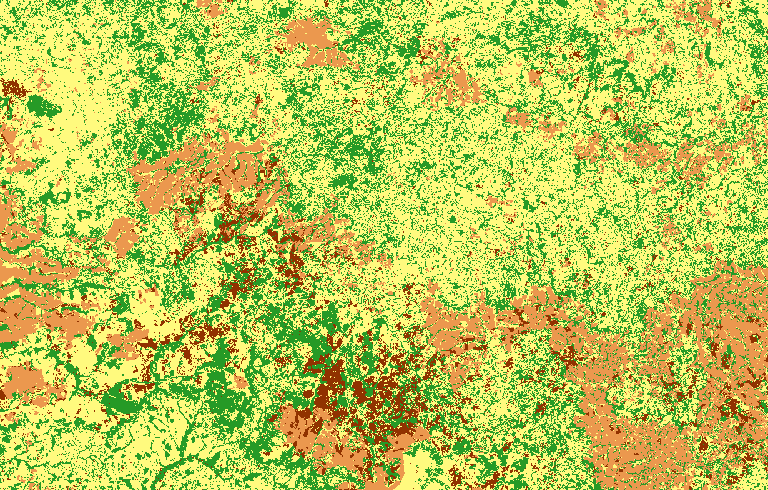
This land cover classification refers to a study area in Mato Grosso state, in the Cerrado biome. For this map, the CBERS-4/WFI monthly data cube was used, with a spatial resolution of 64 meters, using the best pixel composition function named as Least Cloud Cover First (LCF), which was previously named Stack in BDC older versions. This experiment uses the time series of an agricultural calendar year, from September 2018 to August 2019, extracted from the CBERS-4/WFI data cube. The input datacube was CBERS-4 (WFI) Cube Identity - v001, which was deprecated. The classification was made using 852 samples (Annual Crop: 257; Natural Vegetation: 245; Pasture: 216; Semi-Perennial Crop: 134) and the following data cube bands: bands red, green, blue, and near-infrared along with the EVI, NDVI, GEMI, GNDVI, NDWI2, PVR indices. We trained a multi-layer perceptron for a deep learning classification network to classify the data cube using sits R package. This product was funded by the Brazilian Development Bank (BNDES).
-

The Aqua Moderate Resolution Imaging Spectroradiometer (MODIS) Vegetation Indices (MYD13Q1) Version 6.1 data are generated every 16 days at 250 meter (m) spatial resolution as a Level 3 product. The MYD13Q1 product provides two primary vegetation layers. The first is the Normalized Difference Vegetation Index (NDVI) which is referred to as the continuity index to the existing National Oceanic and Atmospheric Administration-Advanced Very High Resolution Radiometer (NOAA-AVHRR) derived NDVI. The second vegetation layer is the Enhanced Vegetation Index (EVI), which has improved sensitivity over high biomass regions. The algorithm chooses the best available pixel value from all the acquisitions from the 16 day period. The criteria used is low clouds, low view angle, and the highest NDVI/EVI value.
-
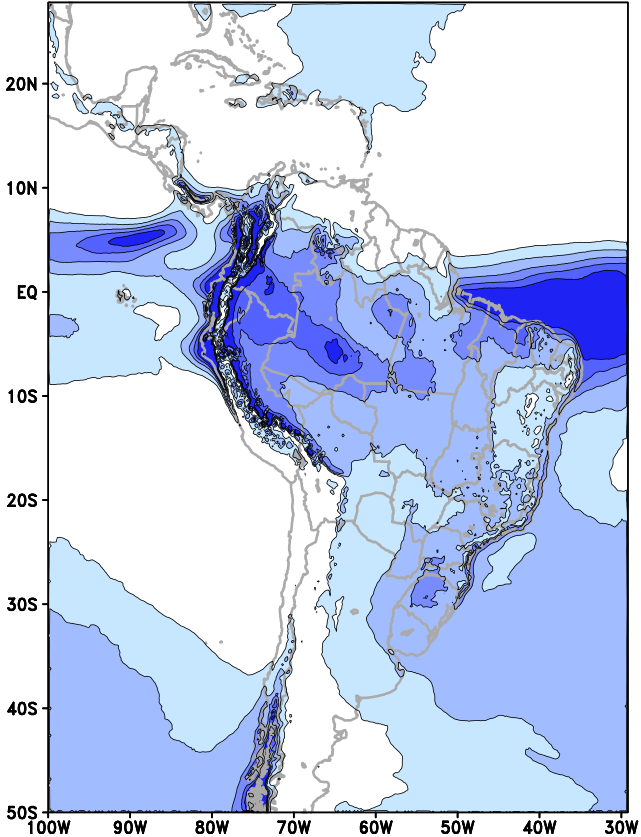
High-Resolution Projections of Climate Change over South America.
-
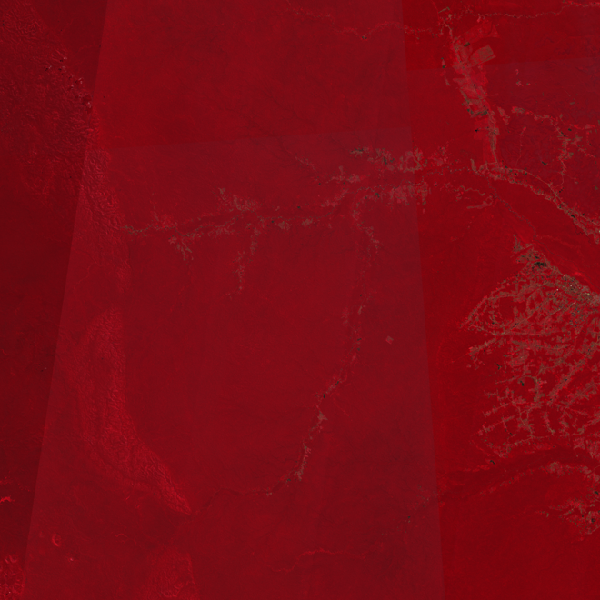
Sentinel-2 image mosaic of Brazilian Amazon biome with 10m of spatial resolution. The mosaic was prepared in support of TerraClass project. The false color composition is based on the MSI bands 08, 04 and 03 assigned to RGB channels. The temporal composition encompasses 03-months of images, starting in june 2024 and ending in August 2024, with a best pixel selection approach called Least Cloud Cover First (LCF). More information on LCF can be found at Brazil Data Cube web site (https://brazil-data-cube.github.io/specifications/processing-flow.html#temporal-compositing). This Image Mosaic used more than 15000 Sentinel-2 scenes and was generated based on an existing data cube of Sentinel-2 images.
 BIG Catalogue
BIG Catalogue